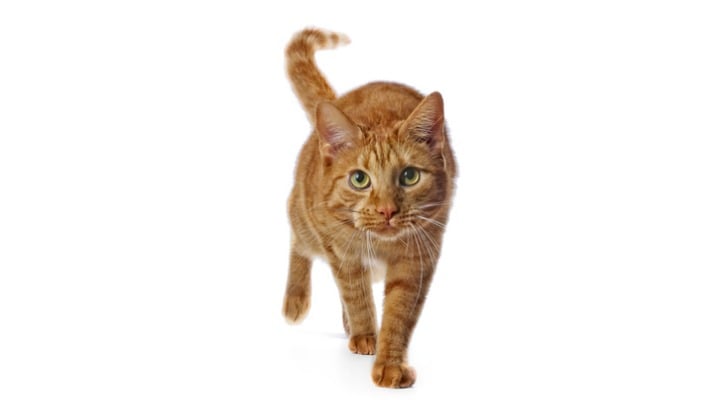
What Your Cat's Body Language is Trying to Tell You
Cats are known as temperamental animals; one moment, they could be cuddling you on the couch, and the next, they’ll be across the room, not wanting to be touched. For this reason, it can sometimes be difficult to understand what your cat wants or what it is trying to tell you.
Because our cats can’t open their mouths to speak (although some of our more vocal companions sure try to!), we can still get clued in to our cat’s internal thoughts by examining its body language. The way a cat looks and moves around can tell us a lot about what’s going on in that intelligent feline brain.
Understanding your cat’s body language can help you be closer to your cat, since you’ll be better able to attend to its wants and needs. It can also help you realize when it’s suffering from a health issue; when you pay more attention to your furry friends’ behavior, it’ll be easier to tell when something is wrong.
Points of focus
Certain parts of your cat’s body can tell you how it is feeling right away. Pay close attention to these three areas and how the react to stimuli to better understand your cat’s body language.
- Eyes: Your cat’s eyes will tell you a lot about how its feeling. Pupils dilating, in particular, can indicate that your cat is ready to pounce or attack—depending on the situation, this might be dangerous or simply playful. Open eyes with non-dilated pupils are the normal look for cats. If your cat is surprised or scared, its eyes will open wide and its pupils will dilate. If it’s feeling aggressive, the eyes will usually narrow and the pupils will dilate.
- Tail: Your cat’s tail can move in a lot of different ways, and it is often a tell-tale sign of how your cat is feeling. A relaxed, curled tail is usually a sign of a relaxed and happy kitty. If your cat is keeping its tail very low to the ground, rigid or puffed up, it’s probably feeling aggressive or scared.
- Ears: The ears on your cat can also move in a variety of ways, but identifying your cat’s mood by observing them is pretty simple. Normal, happy cats will have erect ears. The ears may turn to one side or another as your cat listens to things in your home. If your cat’s ears suddenly go flat against its head, there may be trouble—this is a common expression of aggressive or fear.
The many poses of your cat
Aside from the ears, tail and eyes, your cat will use other parts of its body to portray emotion. Here are some of the most common and distinctive poses your cat uses to convey its feelings.
- Content: When your cat is feeling comfortable and relaxed, it will look like it is lounging around. This is the way your cat should typically look when it’s hanging out at home by itself. It may be laying on its side stretched out or seated neatly with its paws just underneath it. The important part of this pose is that there is no tension. When your cat is feeling happy and wants attention, it may rub up against you or wriggle around on the ground near your feet.
- Focused and “on the hunt": Your cat will most likely appear focused while you are playing with it. By nature, cats are predators, and these predatory instincts come out to play in even harmless games. Your cat is focused if its eyes are open wide with very narrow pupils, and its ears will be perked up straight, leaning forward. The tail will usually be held low to the ground and may be twitching as your cat prepares to pounce.
- Angry: Angry cats are not fun to deal with, as they can quickly turn violent and pounce on, scratch at or bite the object of its frustration. Angry cats usually stand extremely rigid, including their tail, which will often be stick-straight out behind them. Your cat may also crouch low or arch its back high, puffing out its fur. Its eyes might display one of two looks: focused and narrowed, or very round, unblinking eyes. Hissing and growling are two common vocal signs for angry cats.
- Scared: A scared cat will be on high alert as it works to find a safe space and protect itself from its supposed threat. Your cat’s scared body language will probably last a little while, because the cat will need to calm itself down after the fright. The ears will likely be flattened back against the head, and the eyes will be very wide with dilated (large) pupils. Your cat will probably be frozen to the spot it’s in, standing very rigid and still like a statue. If you go near it, it may run away and hiss. Your cat’s back might also be held in a high arch, and its hair will be sticking on end. It will probably hold its tail under it, or let it slash quickly back and forth on the floor.
By paying attention to your kitty’s body language, you’ll be able to learn more about it and have better interactions. Continue to monitor your cat’s behavior to tell when something may be wrong, and treat your cat with love and respect no matter what mood it’s in!


